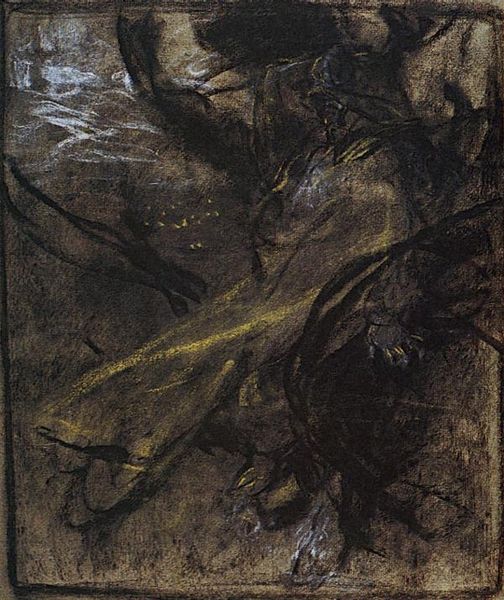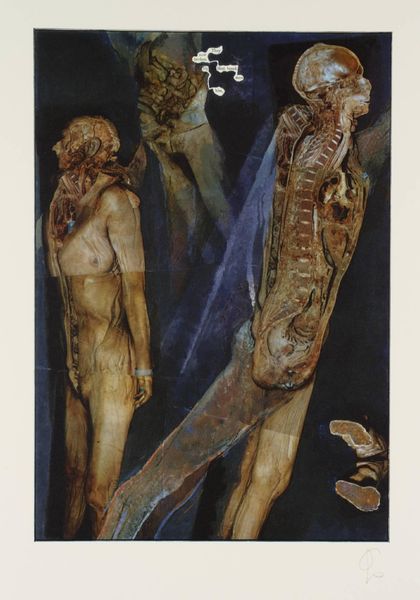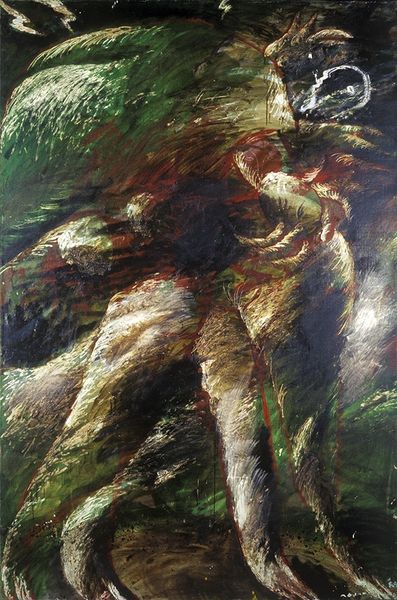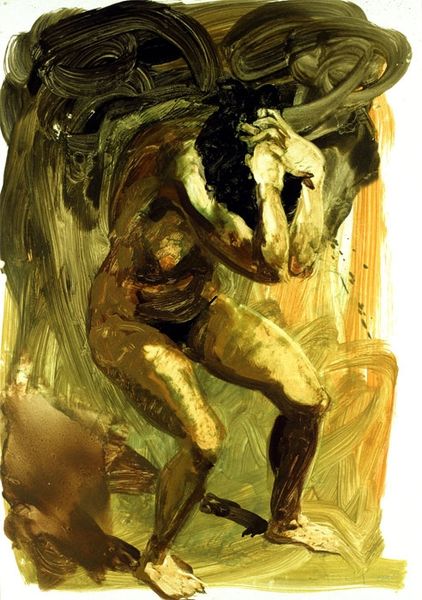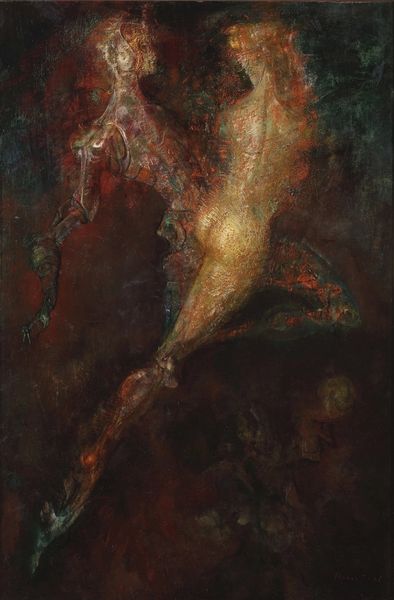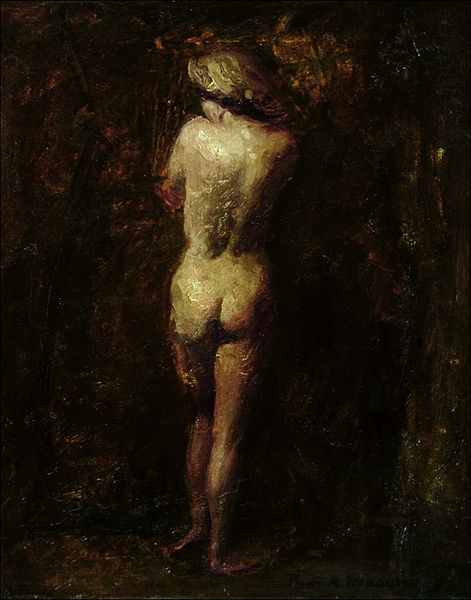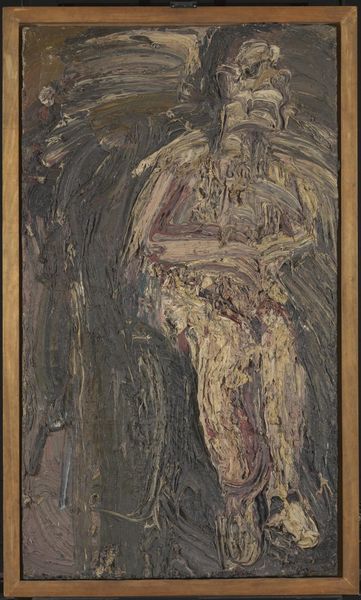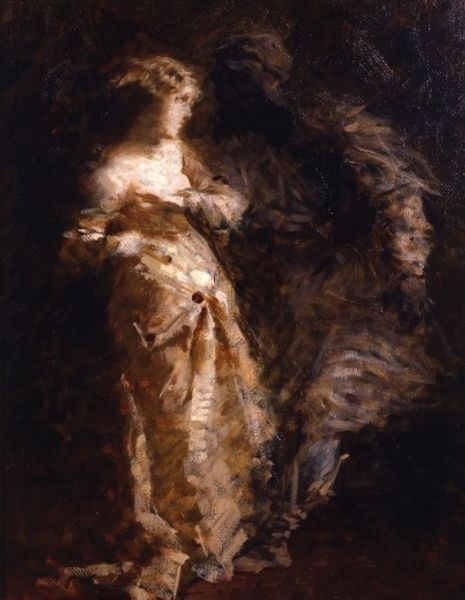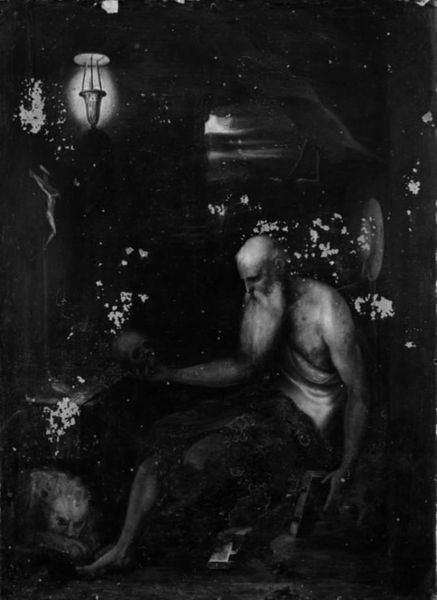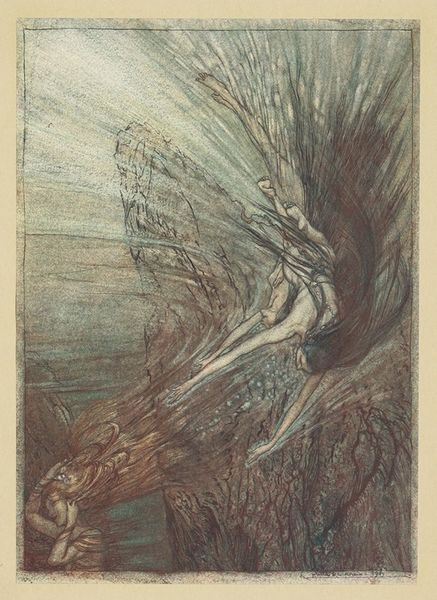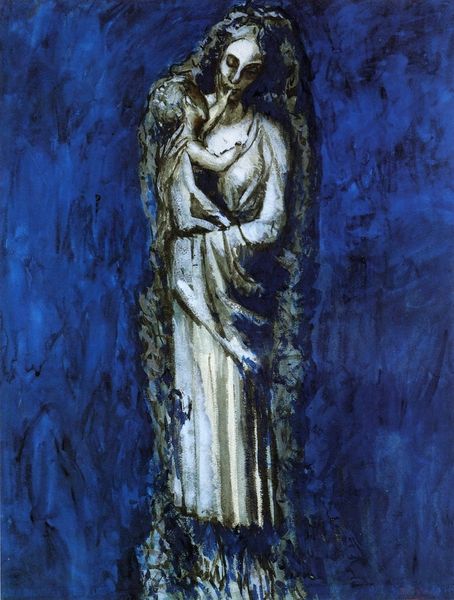
Copyright: Oleg Holosiy,Fair Use
Curator: Here we have Oleg Holosiy's striking oil on canvas, "Naked," painted in 1989. Editor: Immediately, I see a ghostly figure emerging from what appears to be chaotic strokes. There’s a moon, a scattering of circular shapes near the base and, at the very top edge, a painted word. It’s almost monochromatic and quite haunting. Curator: Indeed. This work reflects the tumultuous socio-political landscape of the late 1980s in the Soviet Union. Holosiy, part of the Ukrainian New Wave, often engaged with themes of alienation and the search for identity within a crumbling empire. The neo-expressionist style conveys a sense of raw emotion and disillusionment. The figure embodies a sense of vulnerability laid bare but, at the same time, conveys the search for meaning and agency amid societal upheaval. Editor: I’m drawn to the use of light. The artist appears to capture a primal myth—maybe Eve exiled from paradise, for instance, with those orbs at the painting's lower part becoming symbolic, perhaps of forbidden fruit. The light that haloes the subject might stand for knowledge gained but peace of mind lost. The title 'Ashe', written at the top, gives an alternative symbolic charge – does the name point towards a ritual performance, or some other potent source? Curator: The title ‘Ashe’ connects to West African and Caribbean diasporic religions which see 'Ashe' as the vital force of the universe, connecting people to the divine, representing the potential for power, change, and actualization, but in a moment of profound crisis and alienation for Ukrainians trying to rebuild their identity in the perestroika period. That said, this symbolism offers a potential bridge towards personal empowerment and healing as well, connecting with Holosiy’s own life-affirming quest. Editor: Fascinating! The stark palette, the loose brushwork, the way that figure dissolves and recomposes itself – there’s a rawness and intensity which makes 'Ashe' such a potent and memorable piece. Curator: Absolutely. It's a testament to art's capacity to grapple with both collective trauma and individual resilience, provoking reflection on the intersection of identity, politics, and personal experiences.
Comments
No comments
Be the first to comment and join the conversation on the ultimate creative platform.
